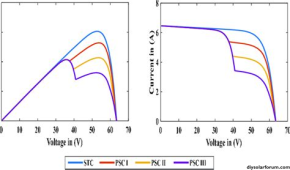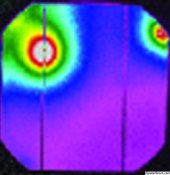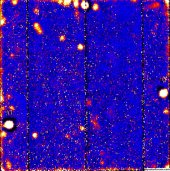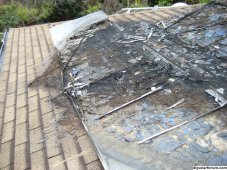Is this example accurate?My last electrical class/homework was 20+ years before I had to dust it off for solar, so the EE required is not that hard. It did take staring at this stuff for 3 weeks and asking questions on the forum though.
How about this combinatorial-ish model:
(Note one of those scenarios is really stupid because it corresponds to bypassing all 3 sections)
- Consider simulation in sections covered by bypass diode. The maximum current output of that section is (roughly) 1/3 Vmpp * min(cell level current, over all cells). The cell level current is the % shading I guess. I don't know how it translates physically nor do I really care for the purposes of understanding solar.
- Now there are 8 possible combinations of bypass. For each combination, the global current will be the minimum of all non-bypassed sections. The voltage will be k * Vmpp/3, where k is the number of non-bypassed sections.
- You can simulate the MPPT by taking the max() across all 8 scenarios
Once you understand that, you can move on to analyzing the different impact if it's a half-cut module.
Lets say there are 72 cells, divided into three groups of 24 cells, with one bypass diode per group:
- Each cell produces 0.6V, so each group of 24 cells produces 24 * 0.6V = 14.4V.
- All three groups together normally produce 3 * 14.4V = 43.2V for the entire panel.
- The total voltage for the other two unshaded groups remains 14.4V each.
- Across the bypass diode for the shaded group, the potential difference is now the voltage of the unshaded groups minus the voltage of the shaded group.
- This means the potential difference across the bypass diode is 14.4V (from an adjacent unshaded group) - 10V (from the shaded group) = 4.4V.
- If this 4.4V exceeds the Vf of the bypass diode, the diode will become forward biased and conduct, allowing current to flow around the shaded group.







